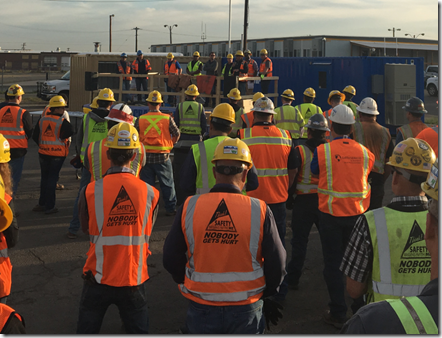 Humans create rituals so that they don’t have to think rationally about a process that is symbolized in the ritual. In this way meaning is transferred quickly and doesn’t require arduous concentration about meaning in the ritual itself. All rituals construct symbols and myths that embody the meaning of something in the ritual. Unfortunately over time humans tend to forget the meaning of the ritual and the ritual then becomes an end in itself – for identification, belonging, political gain and sorting ingroupness and outgroupness.
Humans create rituals so that they don’t have to think rationally about a process that is symbolized in the ritual. In this way meaning is transferred quickly and doesn’t require arduous concentration about meaning in the ritual itself. All rituals construct symbols and myths that embody the meaning of something in the ritual. Unfortunately over time humans tend to forget the meaning of the ritual and the ritual then becomes an end in itself – for identification, belonging, political gain and sorting ingroupness and outgroupness.
Rituals are visible acts of performance and are foundational to cultural transference. The questioning of rituals and any form of iconoclastic deconstruction or resistance is often interpreted as an attack on a culture. Acceptance of certain rituals helps a culture protect itself and the assumptions that form the foundation of the ritual. So what are the characteristics of ritual?
· A ritual has a distinct form as an act that transacts with those as a medium for meaning.
· Rituals have a social context even when others are not present ie. The ritual is shared by a group.
· Rituals are collections of symbols that are enacted.
· Rituals convey psychological meaning through act and symbol to the collective unconscious of a group.
· Rituals codify something shared and the code is understood and accepted by the group.
· The codes of rituals are often put into text, rules and processes of order and given authority for a group.
· Language codified in the ritual is shared amongst the group and becomes a litmus test for consensus.
· Rituals through repetition become a heuristic and habit and are moderated by the group to ensure ‘proper’ enactment of the ritual.
· Rituals embody a collection of choices as indicators of the following of rules and cultural identity.
· In this way rituals can be used to create political association of a group and are used by the power elite of a group to modify membership of the group.
· Rituals are accepted as cultural identity for a group especially when they are unconscious and initiated through bodies of knowledge and specialized language that is often ‘professionalized’.
· Rituals are a framing device and serve a boundary for association and acceptance to a group.
· One enters group identity by accepting without question the assumptions of the ritual.
· Rituals acquire over time an aura of sacredness in themselves and a form of becoming unquestionable.
· Rituals reify the cultural world of a group and the protectors of the rituals become elevated in status and power.
· Rituals sometimes invert accepted norms of other groups and society and explain identity in contradistinction to outsiders.
· Worldviews are hidden in rituals and are rarely questioned.
· Rituals are often used to polarize identity and use binary dynamics to demonise ‘others’ outside of a group.
One of the values of understanding semiotics, myth, gesture and symbol is to understand how rituals work to create in-groupness and out-groupness. Rituals in and of themselves need not necessarily be bad but when left unquestioned assist the creation of cultic practice and in a way are made sacred and automatic. Rituals take on a sense of religiousness in time and are often identified with being ‘saved’ or salvation.
Rituals call for belief and restrict diversity, plurality, transparency and integrity and as such become tools that hide unethical conduct because identity is accepted by performance not methodology.
It is from this perspective that Mary Douglas offers a helpful construct to explore the rituals of Safety and what they do.
Purity and Danger
Risk and Blame
https://monoskop.org/images/1/1d/Douglas_Mary_Risk_and_Blame_Essays_in_Cultural_Theory_1994.pdf



Andrew Böber says
Good post. There is some element of memetric transference about all this – I had produced a post which may interest you https://waitingway.wordpress.com/2020/05/04/memetic-transmission-understanding-the-spread-of-belief/
Rob Long says
Andrew, thanks for making contact, love your blog site.
bernardcorden says
Most of these attributes sound awfully familiar and are redolent of the Australian Institute of Heinrich and Skinner and its fawning acolytes.
Rob Long says
Ritual is a technique for embedding power and a way of demonsing the uninitiated and unclean. Religions have been doing it for millennia, Zero as a religion does it now without thinking. Just believe, just obey, that is the non-ethic of risk.